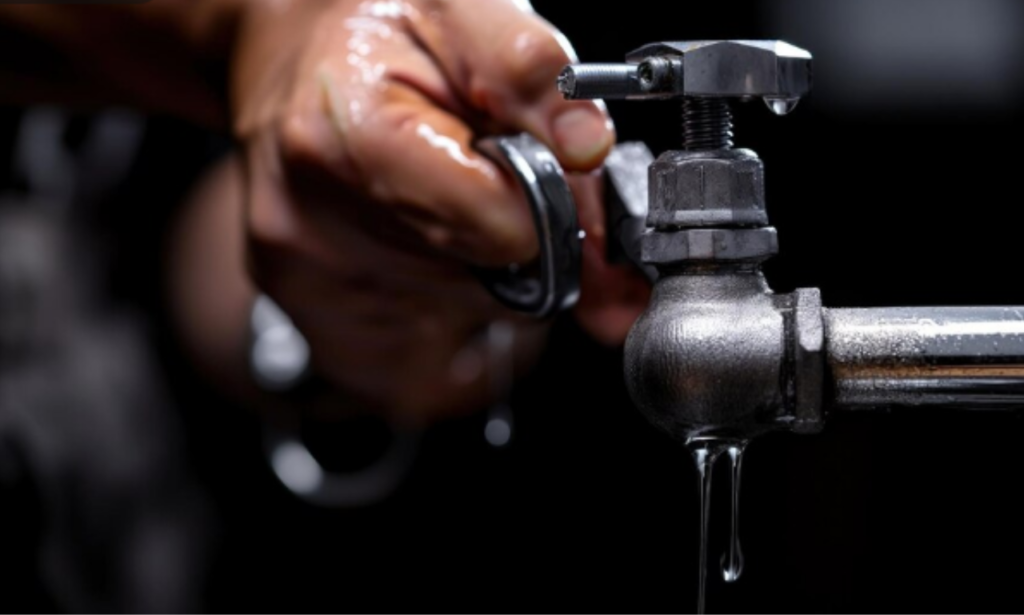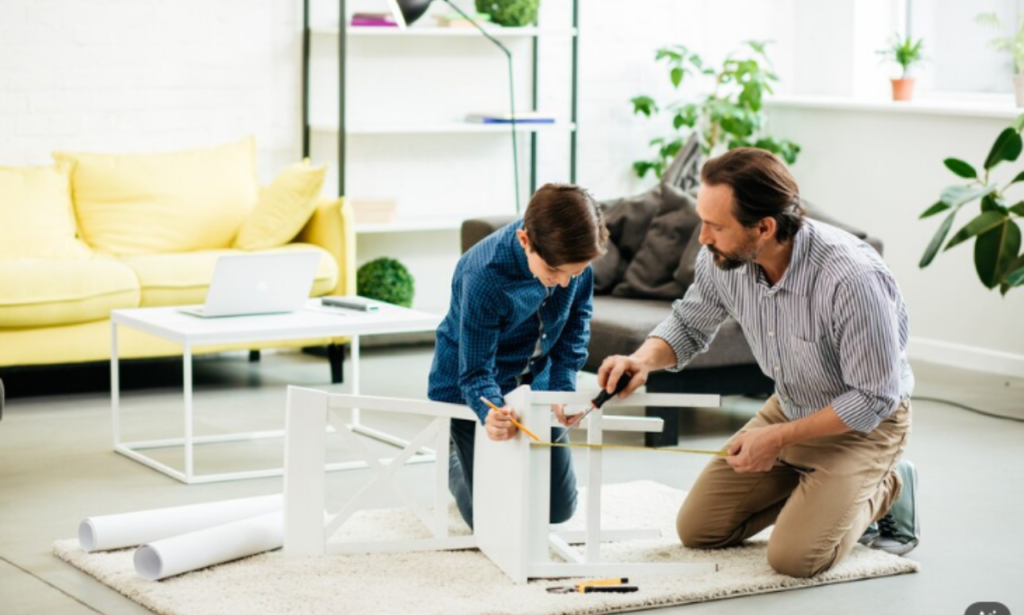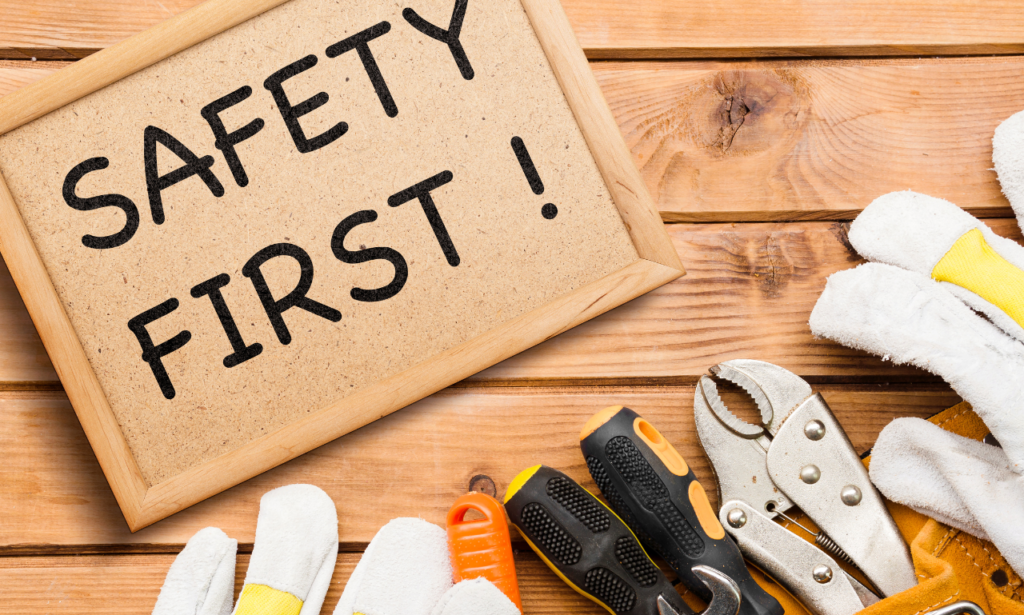When it comes to home maintenance, plumbing is an area that often requires attention. Whether you’re fixing a leaky faucet or tackling a more complex project like installing new pipes, understanding plumbing safety tips is crucial. Not only will it protect your home from potential damage, but it will also ensure your safety while working on plumbing tasks. This article will guide you through essential plumbing safety tips that every homeowner should know. By the end, you’ll be equipped with the knowledge to handle your plumbing projects with confidence and safety in mind.
- Why Plumbing Safety Is Important
- 1. Turn Off the Water Supply
- 2. Wear Protective Gear
- 3. Know Your Limits
- 4. Understand Your Tools
- 5. Be Aware of Electrical Hazards
- 6. Use Proper Ventilation
- 7. Prevent Scalding Injuries
- 8. Protect Against Mold and Mildew
- 9. Know How to Handle Plumbing Emergencies
- 10. Invest in Quality Plumbing Products
- Conclusion: Safety First in Plumbing Projects
Why Plumbing Safety Is Important
Before diving into the tips, it’s essential to understand why plumbing safety matters. Plumbing systems involve water, electricity, and sometimes even gas, all of which can be hazardous if not handled correctly. A minor mistake can lead to water damage, electrical shocks, or even explosions in severe cases. By following the proper safety protocols, you can prevent accidents and keep your home in good condition.
1. Turn Off the Water Supply
The first and most crucial step before starting any plumbing project is to turn off the water supply. This action prevents water from flowing through the pipes while you’re working, reducing the risk of flooding or water damage.
How to Turn Off the Water Supply
- Locate the Main Water Valve: Typically found near the water meter, in the basement, or where the main water line enters your home.
- Turn the Valve Clockwise: This action shuts off the water flow. Ensure the valve is fully closed before proceeding with your work.
- Open the Faucets: After turning off the water supply, open the faucets to drain any remaining water from the pipes.
Pro Tip: Always double-check that the water is off by turning on a faucet before you start your project.
2. Wear Protective Gear
Plumbing work can expose you to various hazards, including sharp tools, chemicals, and even sewage. To protect yourself, always wear the appropriate protective gear.
Essential Protective Gear for Plumbing
- Gloves: Wear sturdy gloves to protect your hands from cuts, chemicals, and hot water.
- Goggles: Protect your eyes from debris, splashes, and chemicals.
- Long-Sleeve Clothing: Wear long sleeves to protect your skin from accidental splashes and sharp objects.
- Knee Pads: Plumbing work often requires kneeling for extended periods. Knee pads will provide comfort and prevent injury.
3. Know Your Limits
While DIY plumbing can save money, it’s essential to know your limits. Some tasks require professional expertise, especially when dealing with gas lines, complex pipe systems, or major installations. If you’re unsure about a task, it’s better to hire a licensed plumber than to risk making a mistake that could lead to costly repairs or injuries.
When to Call a Professional Plumber
- Gas Line Work: Any work involving gas lines should be handled by a professional due to the risk of leaks or explosions.
- Major Pipe Installations: Large-scale pipe installations or replacements require specialized tools and knowledge.
- Sewer Line Repairs: These repairs are complex and often involve digging up parts of your yard, making them best left to professionals.
Pro Tip: If you’re ever in doubt, consult a plumber before starting a project. A quick consultation can save you time, money, and stress in the long run.
4. Understand Your Tools
Using the right tools is essential for both the success of your project and your safety. Before starting your plumbing work, familiarize yourself with the tools you’ll be using and ensure they are in good condition.
Common Plumbing Tools and Their Uses
- Pipe Wrench: Used for gripping and turning pipes. Ensure the wrench is the correct size for the pipe you’re working on.
- Plunger: A plunger is essential for clearing clogs in toilets, sinks, and drains.
- Pipe Cutter: This tool allows you to cut pipes cleanly and precisely. Always wear gloves when using a pipe cutter to protect your hands.
- Plumber’s Snake: Used for clearing deeper clogs that a plunger can’t reach. Be cautious when using this tool to avoid damaging your pipes.
Pro Tip: Regularly inspect your tools for wear and tear, and replace any that are damaged to prevent accidents.
5. Be Aware of Electrical Hazards
Water and electricity are a dangerous combination. When working on plumbing tasks, especially near electrical outlets or appliances, be mindful of the potential for electrical hazards.
Safety Tips for Avoiding Electrical Hazards
- Turn Off Power: If your plumbing work is near electrical outlets or appliances, turn off the power at the breaker box to eliminate the risk of electrical shocks.
- Keep Tools Dry: Ensure that your tools and hands are dry before handling any electrical components.
- Avoid Water Near Electrical Sources: Keep water away from electrical sources, including outlets, switches, and appliances.
Pro Tip: Use a voltage tester to check if an outlet or appliance is live before working near it. This simple step can prevent serious injuries.
6. Use Proper Ventilation
Many plumbing projects involve chemicals like drain cleaners, adhesives, or soldering fumes, which can be harmful if inhaled. Proper ventilation is crucial to avoid respiratory issues and ensure a safe working environment.
How to Ensure Proper Ventilation
- Work in Well-Ventilated Areas: If possible, open windows and doors to allow fresh air to circulate.
- Use a Fan: Position a fan to blow fumes away from your work area.
- Wear a Mask: For added protection, wear a mask designed to filter out harmful fumes.
Pro Tip: Always read the safety instructions on chemical products before use, and never mix chemicals unless directed.
7. Prevent Scalding Injuries
Hot water can cause serious burns, especially when working with water heaters or hot water lines. To prevent scalding injuries, take extra precautions when dealing with hot water.
Safety Tips for Preventing Scalding
- Lower the Water Heater Temperature: Set your water heater to 120°F (49°C) to reduce the risk of scalding.
- Use Insulated Gloves: When working with hot water lines, wear insulated gloves to protect your hands from burns.
- Release Pressure Safely: Before working on a hot water line, release the pressure by turning off the water supply and opening the nearest faucet.
Pro Tip: After lowering the water heater temperature, wait at least 30 minutes before starting your work to allow the water in the pipes to cool down.
8. Protect Against Mold and Mildew
Plumbing leaks can lead to the growth of mold and mildew, which can pose health risks and damage your home. Preventing and addressing leaks promptly is essential for maintaining a safe and healthy environment.
How to Prevent Mold and Mildew
- Check for Leaks Regularly: Inspect pipes, faucets, and water appliances for leaks regularly. Address any issues immediately to prevent water damage.
- Use a Dehumidifier: In areas prone to moisture, such as bathrooms or basements, use a dehumidifier to reduce humidity levels and prevent mold growth.
- Seal Gaps: Ensure that all pipes and joints are properly sealed to prevent water from seeping into walls or floors.
Pro Tip: If you notice mold or mildew, clean it up with a mixture of water and vinegar or a commercial mold remover. Wear protective gear to avoid inhaling spores.
9. Know How to Handle Plumbing Emergencies
Even with the best precautions, plumbing emergencies can happen. Knowing how to respond quickly can minimize damage and keep you safe.
Steps to Take During a Plumbing Emergency
- Turn Off the Water Supply: Immediately shut off the main water valve to stop the flow of water.
- Shut Off Electricity: If the emergency involves water near electrical sources, turn off the power at the breaker box.
- Contain the Leak: Use towels, buckets, or other materials to contain the leak and prevent water damage.
- Call a Professional: If the situation is beyond your control, contact a licensed plumber for assistance.
Pro Tip: Keep the contact information of a reliable plumber handy in case of emergencies. Time is of the essence during a plumbing crisis.
10. Invest in Quality Plumbing Products
Finally, one of the best ways to ensure plumbing safety is to invest in high-quality products. Cheap or substandard materials can lead to leaks, bursts, or other failures, which can compromise your safety and lead to costly repairs.
How to Choose Quality Plumbing Products
- Look for Reputable Brands: Choose products from well-known, reputable brands with positive reviews.
- Check for Certifications: Ensure that the products meet industry standards and have the necessary certifications for safety and quality.
- Avoid Counterfeits: Be cautious when buying online or from unauthorized sellers, as counterfeit products may not meet safety standards.
Pro Tip: It may be tempting to save money by choosing cheaper options, but investing in quality products will save you money in the long run by reducing the risk of failures and repairs.
Conclusion: Safety First in Plumbing Projects
Whether you’re a seasoned DIY enthusiast or just starting with home repairs, following these plumbing safety tips is essential for protecting yourself and your home. From turning off the water supply to knowing when to call in a professional, these tips will help you navigate your plumbing projects safely and efficiently.
By investing in quality products, wearing the right protective gear, and being aware of potential hazards, you can tackle your plumbing tasks with confidence. Remember, safety should always be your top priority. Even a simple mistake can lead to severe consequences, so taking the time to prepare and follow safety protocols is crucial. By adhering to these guidelines, you’ll not only protect yourself but also ensure the longevity and functionality of your home’s plumbing system.
- Life Style Cool Shit Project: Redefine Your Space at LifeStyledCo - January 6, 2025
- Picuki: Your Gateway to Accessing Instagram’s Exclusive Content - December 31, 2024
- 5 Attractive Places to Visit in Abha, Saudi Arabia - December 18, 2024



